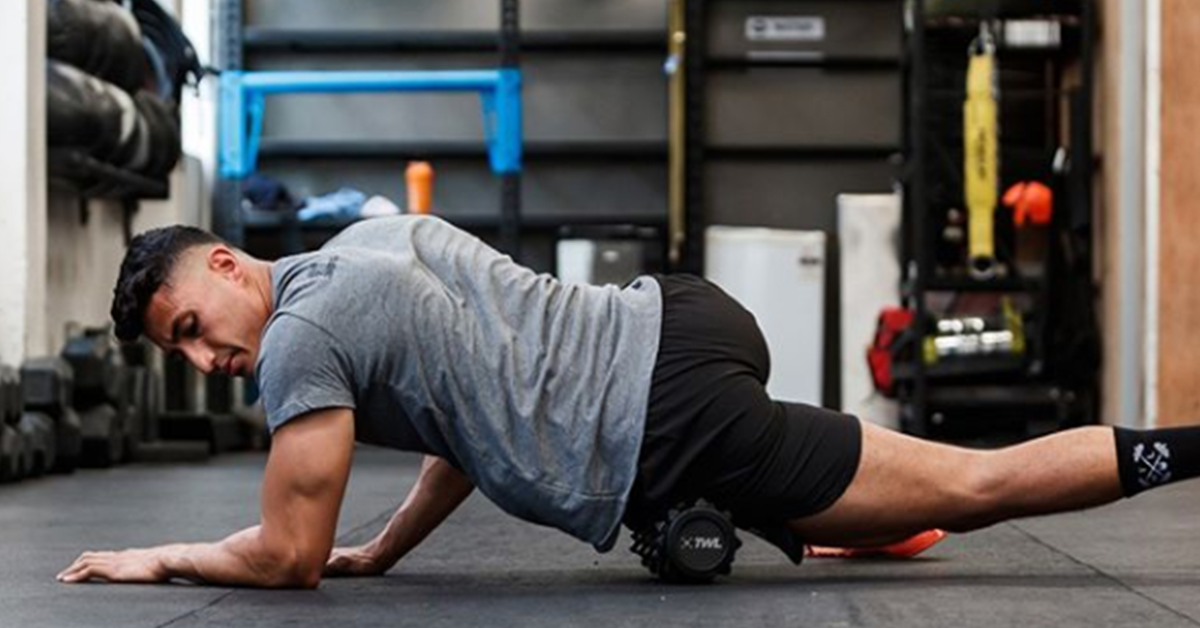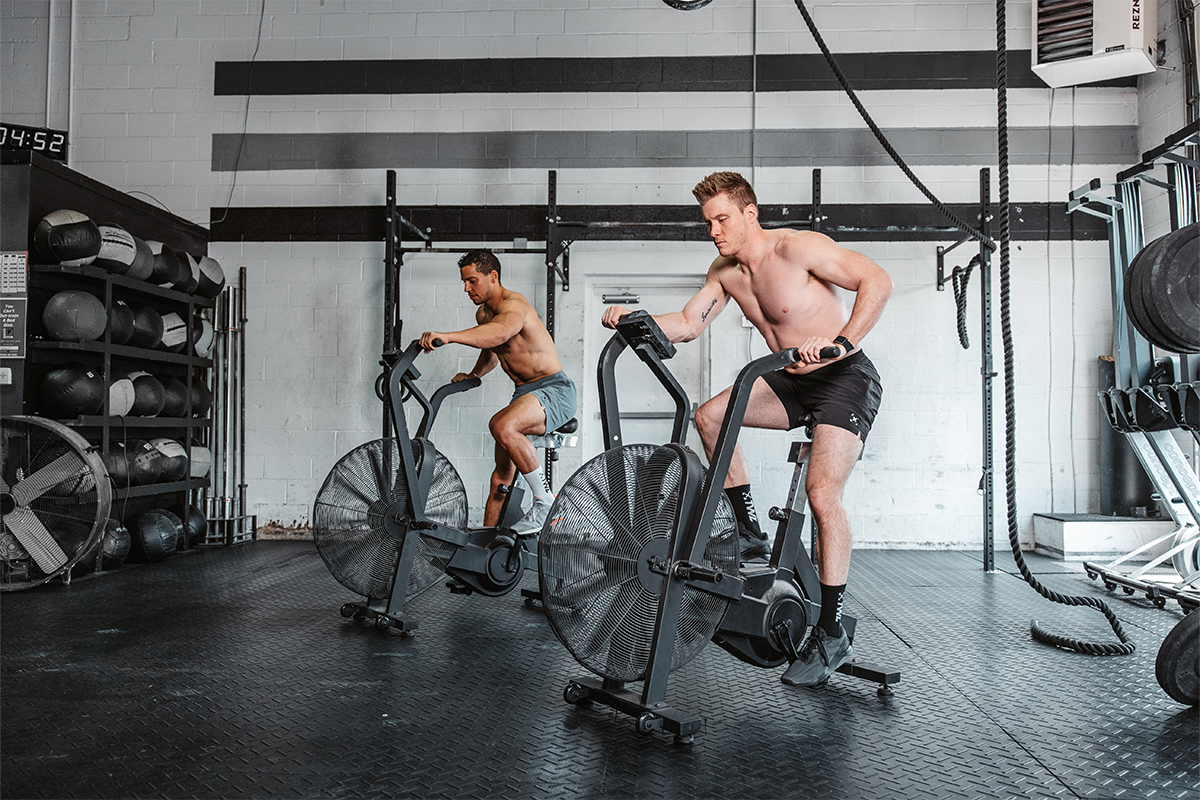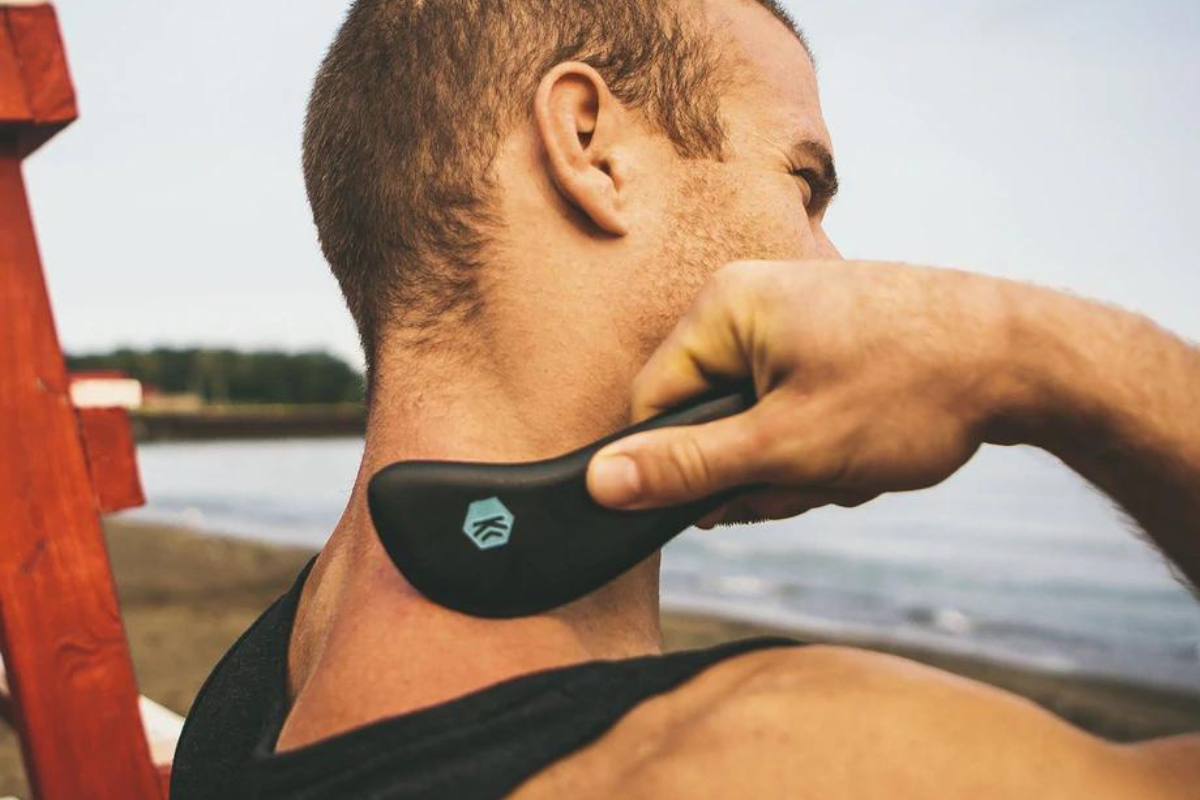Okay, so, you’ve figured out how to stay fit at home. You even know how to train with no equipment. Every sweat sesh is as grueling as the last, and you’re noticing small but promising gains. Just one problem: Your muscles are sore and tight all the time. Are you making time for recovery? It’s as important as your training — even if you aren’t using equipment — so let’s talk more about how to recover after a workout you do at home.
How to Recover After a Workout: Home Edition
1. Prioritize Dynamic Stretches Over Static Stretches
No mobility tools? No excuses! You can still practice recovery even with only your own body. That’s where stretching comes in.
But wait — don’t just pick a position that hurts and sit in it for 20 minutes. Stretch the wrong way and it can actually weaken your muscles. We’re not telling you not to stretch at all. Rather, we’re telling you to do it strategically.
Everybody is different, so ultimately, you need to focus on what works best for you. But, generally speaking, dynamic stretches are widely believed to be more beneficial (and safer). Dynamic stretching means that your muscles and joints go through a complete range of motion.
So, not only are you warming up/cooling down your body, but you’re improving your mobility, too.
An added benefit of dynamic stretching is that it’s a chance to rehearse and mimic a certain movement. For instance, you can practice deadlift form by “stretching” doing banded good mornings.
2. Roll It Out
Missing your massage therapist? Same.
But you can still reap the benefits of massage… using a foam roller! Foam rolling is a type of self-myofascial release (SMR), and science agrees that it can reduce tightness, soreness, and inflammation. This means that it’s also excellent for your mobility. Hello, injury prevention.
There are a number of mobility tools that you can use for SMR, like lacrosse balls (tennis balls can work, too), body sticks, Theragun, and in a pinch, the end of a barbell of the handle of a kettlebell.
Bear in mind, too, that training isn’t the only thing you need to recover from. If you’re spending most of your day in one position (like lounging on the couch or sitting at your desk), then your muscles are tightening. They need help chilling out. SMR to the rescue.
3. Drink (a Lot More) Water
You know how important it is to stay hydrated. But do you know why hydration is crucial to your recovery, specifically? We’ll tell you why: It keeps your joints lubricated, helps you sleep better, helps your heart pump blood, and carries nutrients to your cells.
And guess what? All of these things factor into recovery.
“I already drink enough water,” you’re saying. Maybe, maybe not. As much as 75% of us might be dehydrated, and that might mean you. The historical rule of thumb is to get eight glasses a day, but if we’re all different and unique, why we would assume that we all need eight glasses a day?
You know what they say about people who assume.
A more reliable guideline might be one ounce of water per pound of bodyweight. Yes, it’ll feel like a lot, but your body might very well need it.
4. Try Active Recovery on Your Rest Days
You may be used to spending your rest days with your BFF Netflix, but you might want to consider making a little time for active recovery. This means low-intensity, low-impact physical activity, like a light jog (or even brisk walk), swimming, yoga, or a casual row.
It might seem counterproductive to be active in order to help recover, but active recovery helps to reduce lactic acid buildup, soreness, and tightness. Furthermore, it improves blood flow and eliminates toxins.
Indeed, active recovery can be more beneficial to your gains than complete rest.
Take your recovery seriously and your performance during training will improve as a result.
Which one of these tips will you try first? Let us know in the comments section below.

















